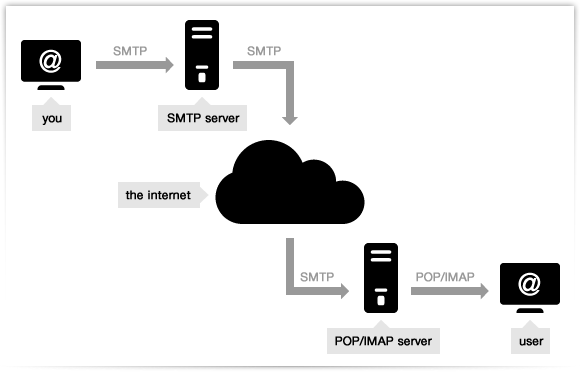

- #Smtp email minbox how to
- #Smtp email minbox verification
- #Smtp email minbox code
- #Smtp email minbox password
How it Works Internally Detecting common typos
#Smtp email minbox how to
It helps to understand what’s going on inside the library so that we can set realistic expectations of our system and know how to deal with issues when they arise.
#Smtp email minbox code
That marks the end of the actual code we will need to validate an email address without sending an email address in NodeJS.īut as it stands, everything is done inside a black box. We are going to need just one dependency: Deep Email Validator
#Smtp email minbox password
We are going to create a simple endpoint that accepts an email and password in the request body and returns a 200 status code if the email is valid or a 400 error code with a message explaining why the request failed otherwise.
#Smtp email minbox verification
This will mostly be useful for correcting common spelling mistakes by legitimate users, but could also come in handy for rejecting accounts by people trying to cheat your verification checks. Lastly, you should also be on the lookout for common typos. If your platform receives a high incidence of such email addresses, you should probably start filtering them out at the point of registration. They aren’t a problem by themselves – there are a lot of legitimate uses for them – but they tend to be quite popular within spammer circles. Temporary email addresses are ephemeral – they exist for a short time and will most likely never be assigned to another user in the system. We’ll explore a more sophisticated way of achieving the same result later on. A bounced email will clearly indicate an invalid email address. A crude way of spotting them would be sending an actual email address and waiting for the message to either be delivered or bounce. If it doesn’t, the email address is obviously fake.įake email addresses with a valid domain name are comparatively more difficult to detect. The latter type of email addresses are relatively easy to weed out – we can perform a simple DNS check to make sure the domain actually exists. Non-existent email addresses come in two forms – those with valid domain names and those with invalid ones. However, some common issues you want to be on the lookout for include: Verifying an email addressĪ lot of different factors can go into verifying an email address, the number, and scope of which are best left to individual applications. This guide is going to focus on the first part of the problem (making sure that the given email address exists.) If your application needs to verify ownership of an email address, you probably won’t be able to escape sending an actual email to the user. Ii) Ensure that the email belongs to that particular user.

Applications need to be able to verify email addresses in order to:

If the requirements for your application are less prohibitive, you could even get away with simply detecting whether there’s an sign in the provided email address.Įmail verification is a different problem on its own. All you need is a simple regex and you’re fine. Most applications can, however, get away with being a bit stricter than the specification allows in order to weed out bad actors.Įmail validation is a relatively simple problem. In the strictest terms, a valid email address should correspond to the RFC 2822 specification. Validation only ensures that the email address provided by the client is syntactically correct. The simplest way to weed out bad email addresses is by validating them. However, this might not be enough for a lot of systems.

Most systems implement this functionality by running a simple regex check against the email address for syntax validation and sending an email to the user-provided address. However, they are fraught with all manner of issues – from spam accounts to blatant trolls, perpetrated by bots and other malicious actors.Īll user-provided input should be validated before being saved to the database, and doubly so for email addresses, considering the important role they serve. Verifying an Email Address Without Sending an Email in NodeJSĪlmost every platform on the internet needs to be able to uniquely identify its users, and email addresses are the most common mechanism for achieving this.


 0 kommentar(er)
0 kommentar(er)
